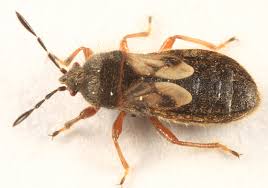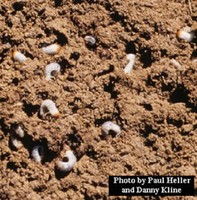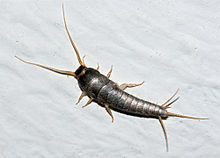Pest Library
Ghosts Ants
Can be recognized by their dark heads and pale or translucent legs.
White-footed Ants
White-footed ants are often found in homes. swarms can be destructive to the structure of the house.
Fire Ants
Fire ants build large mounds for nests and give painful stings.
Carpenter Ants
Carpenter ants burrow in damp wood and have also been known to damage solid wood. they do destroy wood, but remove it in order to build a nest.

Centipedes
Centipede’s have the ability to bite and are poisonous. fangs located behind the head carry poison used to kill insects, their primary food. A centipedes bite to a human feels much like a bee sting and can be dangerous.

Chinch
Chinch bugs prefer hot, dry, and sunny conditions. These pests tend to gather on sunny, open patches of turfgrass. Due to their small size, chinch bugs are hardly noticeable. These pests feed on stems of turfgrass and can be detrimental to a lawn if left untreated.

Cockroaches
German Cockroaches
German cockroaches are a smaller species of cockroach, about half an inch, that produces faster than any other species – making them an insidious pest. they can lay up to 50 eggs each time, causing quick infestations.
Ameican Cockroaches
American roaches, commonly called palmetto bugs, can fly and grow up to two inches in length.

Earwigs
Earwigs have a pair of forcep-like pinchers on their abdomen and membranous wings folded underneath short forewings. Earwigs are mostly nocturnal and hide in moist, tiny crevices during the day. Damage to foliage, flowers, and various crops is commonly blamed on earwigs.

Fleas
Fleas are wingless, with mouthparts adapted for piercing and sucking blood. Fleas are external parasites, living off the blood of mammals and birds.

Grubs
White grubs destroy grass roots en masse. Eventually, their infestation won’t just kill your lawn – it will case the ground to become spongy, destroying the sod on top.

Hunting Billbug
The hunting billbug is a weevil that is also commonly known as the “zoysia billbug” in Florida, where it has been reported as a pest of various grasses.

Millipedes
Millipedes are not poisonous and do not have fangs, but they can emit a fluid to defend themselves. Millipedes feed on decaying plant matter and sometimes living plants roots. If there are too many of these pests in the soil, they can damage the roots.

Nematode
Nematodes are any kind of worm. Some, like earthworms, are good tenants and beneficial to your soil and plants. Many others are not.

Rodents
Rodents can carry up to thirty-five diseases into your home, that you and your loved ones are susceptible to. Rodents like to be near humans so that they have a ready supply of food.

Silverfish
Silverfish are nocturnal insects typically 13–30 mm (0.5–1 in) long. Their abdomens taper at the end, giving them a fish-like appearance. The newly hatched are whitish, but develop a greyish hue and metallic shine as they get older. Silverfish consume matter that contains polysaccharides, such as starches and dextrin in adhesives. These include book bindings, carpet, clothing, coffee, dandruff, glue, hair, some paints, paper, photos, plaster, and sugar.

Spiders
Black Widow
The venomous bite of these spiders is considered particularly dangerous because of the neurotoxin latrotoxin, which causes the condition latrodectism, both named for the genus. The female black widow has unusually large venom glands and her bite is particularly harmful to humans.
Brown Recluse Spider
Brown recluse spiders are usually between 6–20 mm, but may grow larger. While typically light to medium brown, they range in color from cream-colored to dark brown or blackish gray. The brown recluse spider is a spider with a venomous bite.


Sod Web Worm
Several species of sod webworms or “lawn moths” commonly infest home lawns. sod webworm larvae can cause major damage to residential turf, especially during periods of drought.

Ticks
Ticks are parasites, and as a result, are on a never-ending hunt for a host. If a host is not available, a tick can survive for up to a year without feeding. Ticks can be found year-round but are most prevalent in the warm summer months.
